NASA Spotlight: Christina Hernandez, NASA Mars 2020 Rover Instrument Engineer

NASA Spotlight: Christina Hernandez, NASA Mars 2020 Rover Instrument Engineer
“I was in love with the beauty of space. It was my introduction to appreciating the beauty of complex, chaotic things—black holes, giant gas planets, or killer asteroids—that got my imagination riled up.“ -Christina Hernandez
Christina Hernandez, a space enthusiast and self-proclaimed nerd, is an aerospace engineer at our Jet Propulsion Laboratory in California where she works as an instrument engineer on our newest rover mission – Mars2020. The Mars2020 rover is a robotic scientist that is launching to the Red Planet next year. If you would like to launch to the Red Planet as well, you can Send Your Name to Mars along with millions of other people! Christina’s job is to make sure that the instruments we send to the Martian surface are designed, built, tested and operated correctly so we can retrieve allll the science. When she isn’t building space robots, she loves exploring new hiking trails, reading science fiction and experimenting in the kitchen. Christina took a break from building our next Martian scientist to answer some questions about her life and her career:
If you could go to Mars, would you? And what are three things you’d bring with you?
Only if I had a round trip ticket! I like the tacos and beach here on Earth too much. If I could go, I would bring a bag of Hot Cheetos, a Metallica album, and the book On the Shoulders of Giants.
If you could name the Mars2020 rover, what would you name it and why?

Pilas, a reference to a phrase my family says a lot, ponte las pilas. It literally means put your batteries on or in other words, get to work, look alive or put some energy into it. Our rover is going to need to have her batteries up and running for all the science she is going to be doing! Luckily, the rover has a radioisotope thermoelectric generator (RTG) to help keep the batteries charged!
What’s been your most memorable day at NASA?

It’s been seeing three of the instruments I worked on getting bolted and connected to the flight rover. I’ll never forget seeing the first 1’s and 0’s being exchanged between the rover compute element (RCE), the rover’s on-board brain, and the instruments’ electronics boxes (their brains). I am sure it was a wonderful conversation between the two!
It’s a long journey to get from Earth to Mars. What would be on your ultimate road trip playlist?
Metallica, The Cure, Queen, Echo and the Bunnymen, Frank Sinatra, Ramon Ayala, AC/DC, Selena, Los Angeles Azules, ughhhh – I think I just need a Spotify subscription to Mars.
What is one piece of advice you wish someone would’ve told you?

Take your ego out of the solution space when problem solving.
Do you have any secret skills, talents, or hobbies?

I love reading. Each year I read a minimum of 20 books, with my goal this year being 30 books. It’s funny I increased my goal during what has definitely been my busiest year at work. I recently got into watercolor painting. After spending so much time connected at work, I started looking for more analog hobbies. I am a terrible painter right now, but I painted my first painting the other day. It was of two nebulas! It’s not too bad! I am hoping watercolor can help connect me more to the color complexities of nature...and it’s fun!
What’s a project or problem that you would love the ability to tackle/work on?
I would love to work on designs for planetary human explorers. So far, I have focused on robotic explore, but when you throw a “loveable, warm, squishy thing” into the loop, its creates a different dimension to design – both with respect to operability and risk.
Thanks so much Christina! The Mars2020 rover is planned to launch on July 17, 2020, and touch down in Jezero crater on Mars on February 18, 2021.
Make sure to follow us on Tumblr for your regular dose of space: http://nasa.tumblr.com
More Posts from Nasa and Others
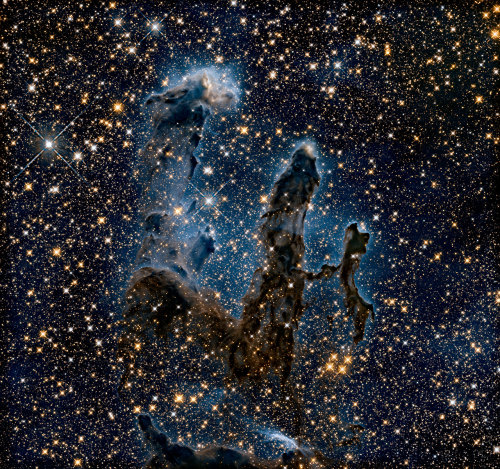
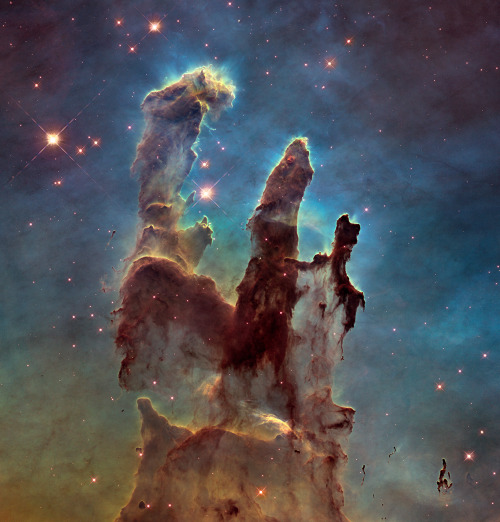
Sometimes... there’s more than meets the eye. 👀 You’re looking at two very different takes on an iconic image.
Human eyes can see only a small portion of the range of radiation given off by the objects around us. We call this wide array of radiation the electromagnetic spectrum, and the part we can see visible light.
In the first image, researchers revisited one of Hubble Space Telescope’s most popular sights: the Eagle Nebula’s Pillars of Creation. Here, the pillars are seen in infrared light, which pierces through obscuring dust and gas and unveil a more unfamiliar — but just as amazing — view of the pillars. The entire frame is peppered with bright stars and baby stars are revealed being formed within the pillars themselves. The image on the bottom is the pillars in visible light.
Image Credit: NASA, ESA/Hubble and the Hubble Heritage Team
Make sure to follow us on Tumblr for your regular dose of space: http://nasa.tumblr.com.
Our Favorite Valentines Throughout the Universe
Today is Valentine’s Day. What better way to express that you love someone than with an intergalactic love gram? Check out some of our favorites and send them to all of your cosmic companions:
Your love is galactic

The Hubble Space Telescope revolutionized nearly all areas of astronomical research — and captured some truly lovely images. Here, a pair of intersecting galaxies swirl into the shape of a rose as a result of gravitational tidal pull. What type of roses are you getting for your love — red or galactic?
I think you’re n{ice}

IceBridge is the largest airborne survey of Earth’s polar ice ever flown. It captures 3-D views of Arctic and Antarctic ice sheets, ice shelves and sea ice. This lovely heart-shaped glacier feature was discovered in northwest Greenland during an IceBridge flight in 2017. Which of your lover’s features would you say are the coolest?
You’re absolutely magnetic

Even though we can't see them, magnetic fields are all around us. One of the solar system’s largest magnetospheres belongs to Jupiter. Right now, our Juno spacecraft is providing scientists with their first glimpses of this unseen force. Is your attraction to your loved one magnetic?
You’re MARS-velous

This heart-shaped feature on the Martian landscape was captured by our Mars Reconnaissance Orbiter. It was created by a small impact crater that blew darker material on the surface away. What impact has your loved one had on you?
I <3 you

From three billion miles away, Pluto sent a “love note” back to Earth, via our New Horizons spacecraft. This stunning image of Pluto's "heart" shows one of the world's most dominant features, estimated to be 1,000 miles (1,600 km) across at its widest point. Will you pass this love note on to someone special in your life?
Light of my life

Our Solar Dynamics Observatory keeps an eye on our closest star that brings energy to you and your love. The observatory helps us understand where the Sun's energy comes from, how the inside of the Sun works, how energy is stored and released in the Sun's atmosphere and much more. Who would you say is your ray of sunshine?
Do any of these cosmic phenomena remind you of someone in your universe? Download these cards here to send to all the stars in your sky.
Want something from the Red Planet to match your bouquet of red roses? Here is our collection of Martian Valentines.
Make sure to follow us on Tumblr for your regular dose of space: http://nasa.tumblr.com
Science, Technology, Engineering and Math: STEM
Today is College Signing Day and we’re working with the White House to celebrate all graduating seniors and inspire more young people to Reach Higher and enroll in higher education.

Additionally, choosing a degree within a STEM (Science, Math, Engineering and Technology) field enables the United States to remain the global economic and technological leader. We feel that it’s our duty to help inspire the next generation of scientists, technologists, engineers and astronauts.

It’s important that each and every student feels empowered and equipped with the knowledge to solve tough problems, evaluate evidence and analyze information. These are all skills students can learn through studying a subjects in STEM.
College is one of the stepping stones to many careers, including becoming an astronaut! Here are a few of our astronauts on their college graduation day, along with their astronaut portrait.
Astronaut Victor Glover

Undergraduate: California Polytechnic State University Graduate: Air University and Naval Postgraduate School Astronaut Class: 2013
Astronaut Reid Wiseman

Undergraduate: Rensselaer Polytechnic Institute Graduate: Johns hopkins University Astronaut Class: 2009
Astronaut Thomas Marshburn

Undergraduate: Davidson College Graduate: University of Virginia, Wake Forest University and University of Texas medical Branch Astronaut Class: 2004
Astronaut Karen Nyberg

Undergraduate: University of North Dakota Graduate: University of Texas at Austin Astronaut Class: 2000
Astronaut Bob Behnken

Undergraduate: Washington University Graduate: California Institute of Technology Astronaut Class: 2000
Astronaut Peggy Whitson

Undergraduate: Iowa Wesleyan College Graduate: Rice University Astronaut Class: 1996
Astronaut Joseph Acaba

Undergraduate: University of California Graduate: University of Arizona Astronaut Class: 2004
Astronaut Rex Walheim

Undergraduate: University of California, Berkeley Graduate: University of Houston Astronaut Class: 1996
Whether you want to be an astronaut, an engineer or the administrator of NASA, a college education opens a universe of possibilities:
Administrator Charles Bolden

Here, Administrator Bolden wears the jersey of Keenan Reynolds, a scholar athlete who graduates from the Naval Academy this year. His jersey is on its way to the college football hall of fame. Bolden holds a drawing of himself as a midshipman in the Navy.
Deputy Administrator Dava Newman

Deputy Administrator Dava Newman sports her college shirt, along with Lisa Guerra, Technical Assistant to the Associate Administrator. Both women studied aerospace engineering at Notre Dame.
Make sure to follow us on Tumblr for your regular dose of space: http://nasa.tumblr.com
Would you dance off with an alien? If so, what song would you dance off? :D
Asteroid Terms: Explained
There are interesting asteroid characters in our solar system, including an asteroid that has its own moon and even one that is shaped like a dog bone! Our OSIRIS-REx mission launches at 7:05 p.m. EDT today and will travel to asteroid Bennu.

Scientists chose Bennu as the target of the OSIRIS-REx mission because of its composition, size and proximity to Earth. Bennu is a rare B-type asteroid (primitive and carbon-rich), which is expected to have organic compounds and water-bearing minerals like clays.
Our OSIRIS-REx mission will travel to Bennu and bring a small sample back to Earth for study.

When talking about asteroids, there are some terms scientists use that might not be in your typical vocabulary…but we’ll help with that!
Here are a few terms you should know:
Orbital Eccentricity: This number describes the shape of an asteroid’s orbit by how elliptical it is. For asteroids in orbit around the sun, eccentricity is a number between 0 and 1, with 0 being a perfectly circular orbit and 0.99 being a highly elliptical orbit.
Inclination: The angle, in degrees, of how tilted an asteroid’s orbit is compared to another plane of reference, usually the plane of the Earth’s orbit around the sun.
Orbital Period: The number of days it takes for an asteroid to revolve once around the sun. For example, the Earth’s orbital period is 365 days.
Perihelion Distance: The distance between an asteroid and the sun when the asteroid is closest to the sun.
Aphelion Distance: The distance between the asteroid and the sun when the asteroid is farthest away from the sun.
Astronomical unit: A distance unit commonly used to describe orbits of objects around the sun. The distance from the Earth to the sun is one astronomical unit, or 1 AU, equivalent to about 93 million miles or 150 million kilometers.
Diameter: A measure of the size of an asteroid. It is the length of a line from a point on the surface, through the center of the asteroid, extending out to the opposite surface. Irregularly shaped asteroids may have different diameters depending on which direction they are measured.
Rotation Period: The time it takes for an asteroid to complete one revolution around its axis of rotation. For example, the rotation period of the Earth is approximately 24 hours, or 1 day.
Spectral Type: The classification of an asteroid, based on a measurement of the light reflected by the asteroid.

Watch live launch coverage of OSIRIS-REx to asteroid Bennu starting at 5:30 p.m, on NASA TV: http://www.nasa.gov/nasatv
Make sure to follow us on Tumblr for your regular dose of space: http://nasa.tumblr.com
How has being in space changed your perspective of life on Earth?
10 Things: Why Cassini Mattered
One year ago, on Sept. 15, 2017, NASA’s Cassini spacecraft ended its epic exploration of Saturn with a planned dive into the planet’s atmosphere--sending back new science to the last second. The spacecraft is gone, but the science continues. Here are 10 reasons why Cassini mattered...

1. Game Changers
Cassini and ESA (European Space Agency)’s Huygens probe expanded our understanding of the kinds of worlds where life might exist.

2. A (Little) Like Home
At Saturn’s largest moon, Titan, Cassini and Huygens showed us one of the most Earth-like worlds we’ve ever encountered, with weather, climate and geology that provide new ways to understand our home planet.

3. A Time Machine (In a Sense)
Cassini gave us a portal to see the physical processes that likely shaped the development of our solar system, as well as planetary systems around other stars.

4. The Long Run
The length of Cassini’s mission enabled us to observe weather and seasonal changes over nearly half of a Saturn year, improving our understanding of similar processes at Earth, and potentially those at planets around other stars.

5. Big Science in Small Places
Cassini revealed Saturn’s moons to be unique worlds with their own stories to tell.

6. Ringscape
Cassini showed us the complexity of Saturn’s rings and the dramatic processes operating within them.

7. Pure Exploration
Some of Cassini’s best discoveries were serendipitous. What Cassini found at Saturn prompted scientists to rethink their understanding of the solar system.

8. The Right Tools for the Job
Cassini represented a staggering achievement of human and technical complexity, finding innovative ways to use the spacecraft and its instruments, and paving the way for future missions to explore our solar system.

9. Jewel of the Solar System
Cassini revealed the beauty of Saturn, its rings and moons, inspiring our sense of wonder and enriching our sense of place in the cosmos.

10. Much Still to Teach Us
The data returned by Cassini during its 13 years at Saturn will continue to be studied for decades, and many new discoveries are undoubtedly waiting to be revealed. To keep pace with what’s to come, we’ve created a new home for the mission--and its spectacular images--at https://solarsystem.nasa.gov/cassini.
Make sure to follow us on Tumblr for your regular dose of space: http://nasa.tumblr.com.
Top 10 Star Trek Planets Chosen by Our Scientists
What would happen if the crew of the Starship Enterprise handed over the controls to our scientists and engineers? It turns out many are avid Star Trek fans with lengthy itineraries in mind.
1. Vulcan

What is perhaps the most famous Star Trek planet was placed by creator Gene Roddenberry in a real star system: 40 Eridani. This trinary system of three dwarf stars, about 16 light-years from Earth, could play host to exoplanets; none have been detected there so far. The most massive is 40 Eridani A, chosen as Vulcan’s sun.
2. Andoria

An icy “M-class” (Star Trek's term for “Earth-like”) moon of a much larger planet—a gas giant—that is home to soft-spoken humanoids with blue skin, white hair and stylish antennae. In our solar system, gas giants play host to icy moons, such as Jupiter’s Europa or Saturn’s Enceladus, that possess subsurface oceans locked inside shells of ice. Our missions are searching for lifeforms that might exist in these cold, dark habitats.
3. Risa

Another Trek M-class planet known for its engineered tropical climate and its welcoming humanoid population. The planet is said to orbit a binary, or double, star system—in Star Trek fan lore, Epsilon Ceti, a real star system some 79 light-years from Earth. The first discovery of a planet around a binary was Kepler-16b, which is cold, gaseous and Saturn-sized.
4. “Shore Leave” planet, Omicron Delta region

This is another amusement park of a planet, where outlandish characters are manufactured in underground factories straight from the crew members’ imaginations. In real life, astronauts aboard the International Space Station print out plastic tools and containers with their own 3-D printer.
5. Nibiru

“Star Trek: Into Darkness” finds Captain Kirk and Dr. McCoy fleeing from chalk-skinned aliens through a red jungle. Red or even black vegetation could exist on real planets that orbit cooler, redder stars, an adaptation meant to gather as much light for photosynthesis as possible. An example may be Kepler-186f, a planet only 10 percent larger than Earth in diameter. At high noon, the surface of this planet would look something like dusk on Earth.
6. Wolf 359

A star best known in the Star Trek universe as the site of a fierce battle in which a multitude of “Star Trek: Next Generation” ships are defeated by the Borg. But Wolf 359 is a real star, one of the closest to Earth at a distance of 7.8 light-years. Wolf 359 is also a likely observational target for the Kepler space telescope in the upcoming Campaign 14 of its “K2” mission.
7. Eminiar VII/Vendikar

These two planets are neighbors, sharing a star system. So, of course, they’ve been at war for centuries. While we have no signs of interplanetary war, multiple rocky worlds have been discovered orbiting single stars. A cool dwarf star called TRAPPIST-1 is orbited by three Earth-size planets; two have a chance of being the right temperature for liquid water, with possible Earth-like atmospheres.
8. Remus

The planets Romulus and Remus are home to the Romulan Empire (ancient Rome, anyone?), although Remus seemed to have gotten the raw end of the deal. Remus is tidally locked, one face always turned to its star. Tidally locked worlds might well be a real thing, with many possible candidates discovered with our Kepler space telescope. The habitable portion of the surface of such planets might be confined to a band between the day and night sides called the “terminator zone”—a.k.a. the twilight zone.
9. Janus VI

A rocky world lacking an atmosphere, perhaps similar to Mars. While humans must maintain an artificial underground environment to survive, the innards of the planet are a comfortable home to an alien species known as the “Horta.” Their rock-like biochemistry is based on silicon, rather than carbon, inspiring us to imagine the many forms life might take in the universe.
10. Earth

In the Star Trek universe, Earth is home to Starfleet Headquarters; the real Earth is, at least so far, the only life-bearing world we know. No true Earth analogs have been discovered among the real exoplanets detected so far. But a new generation of space telescopes, designed to capture direct images of exoplanets in Earth’s size range, might one day reveal an alternative “pale blue dot.”
Learn more about exoplanets at: exoplanets.nasa.gov
Link to full article: https://exoplanets.nasa.gov/news/1378/top-10-star-trek-destinations-chosen-by-nasa-scientists/
Make sure to follow us on Tumblr for your regular dose of space: http://nasa.tumblr.com
Solar System: 2016 Preview
What do we have planned for 2016? A return to the king of planets. A survey of mysterious Ceres. More postcards from Pluto. Anyone who follows solar system exploration in 2016 is in for quite a ride. Last year was one for the record books – and now here are 10 things to look forward to in the new year. See also: what we have planned agency wide for 2016.
Juno Arrives at Jupiter

July 4, 2016 is arrival day for the Juno mission, the first sent expressly to study the largest planet in the solar system since our Galileo mission in the 1990s. Humans have been studying Jupiter for hundreds of years, yet many basic questions about the gas world remain: How did it form? What is its internal structure? Exactly how does it generate its vast magnetic field? What can it tell us about the formation of other planets inside and outside our solar system? Beginning in July, we’ll be a little closer to the answers.
OSIRIS-REx Takes Flight
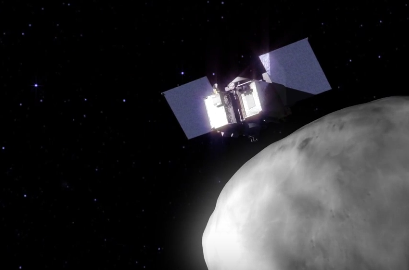
The OSIRIS-REx mission, short for Origins-Spectral Interpretation-Resource Identification-Security-Regolith Explorer, sets sail for an asteroid in September. The spacecraft will use a robotic arm to pluck samples from the asteroid Bennu to help better explain our solar system’s formation and even find clues to how life began.
Dawn Sees Ceres Up Close

After an odyssey of many years and millions of miles, in December the Dawn spacecraft entered its final, lowest mapping orbit around the dwarf planet Ceres. The intriguing world’s odd mountains, craters and salty deposits are ready for their close-ups. We can expect new images of the starkly beautiful surface for months.
Cassini Commences Its Grand Finale

In late 2016, the Cassini spacecraft will begin a daring set of orbits called the Grand Finale, which will be in some ways like a whole new mission. Beginning this year and extending into next, the spacecraft will repeatedly climb high above Saturn’s poles, flying just outside its narrow F ring 20 times. After a last targeted Titan flyby, the spacecraft will then dive between Saturn’s uppermost atmosphere and its innermost ring 22 times. As Cassini plunges past Saturn, the spacecraft will collect rich and valuable information far beyond the mission’s original plan.
New Horizons Sends More Postcards from Pluto

We have stared slack-jawed at the images and discoveries from last year’s Pluto flyby, but the fact is that most of the data that New Horizons collected remains on board the spacecraft. In 2016, we’ll see a steady release of new pictures — and very likely some expanded answers to longstanding questions.
Mars Missions March Forward
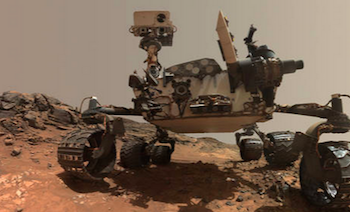
With five of our missions continuing their Martian quests, 2016 should be a good year for discoveries on the Red Planet.
Mars Odyssey
Mars Opportunity
Mars Reconnaissance Orbiter
Mars Curiosity
MAVEN
Mercury Transits the Sun

A transit is a very rare astronomical event in which a planet passes across the face of the sun. In May, Mercury will transit the sun, on of only thirteen Mercury transits each century on average.
LRO Keeps an Eagle Eye On the Moon

The Lunar Reconnaissance Orbiter (LRO) will extend its run in 2016, scanning the moon’s surface with its sharp-eyed instruments, investigating everything from lava tube skylights to changes at the Apollo landing sites.
Spacecraft Fly Under Many Flags

Our partner agencies around the world will be flying several new or continuing planetary missions to destinations across the solar system:
Akatsuki at Venus
ExoMars
Mars Express
Mars Orbiter Mission
Rosetta at Comet 67/P
Technology Demonstration Missions Push the Envelope
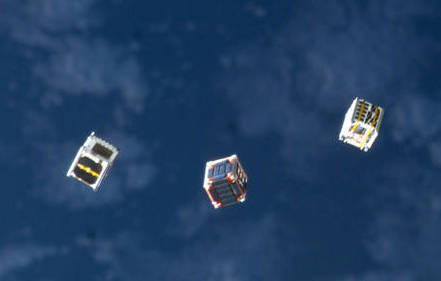
We’re always looking for new frontiers on distant worlds, as well as the technology that will take us there. This year, several missions are planned to take new ideas for a spin in space:
Deep Space Atomic Clock
NODES
LDSD
Make sure to follow us on Tumblr for your regular dose of space: http://nasa.tumblr.com
How did your perspective on Earth & humanity change from space?
-
 shadydkid liked this · 3 months ago
shadydkid liked this · 3 months ago -
 annita89q56p4bh liked this · 6 months ago
annita89q56p4bh liked this · 6 months ago -
 biggsixx64 liked this · 1 year ago
biggsixx64 liked this · 1 year ago -
 charleytakeabow liked this · 1 year ago
charleytakeabow liked this · 1 year ago -
 slipperycatto liked this · 2 years ago
slipperycatto liked this · 2 years ago -
 chirrinsky liked this · 3 years ago
chirrinsky liked this · 3 years ago -
 harpsicalbiobug reblogged this · 3 years ago
harpsicalbiobug reblogged this · 3 years ago -
 anneinspace liked this · 3 years ago
anneinspace liked this · 3 years ago -
 harpsicalbiobug liked this · 3 years ago
harpsicalbiobug liked this · 3 years ago
Explore the universe and discover our home planet with the official NASA Tumblr account
1K posts